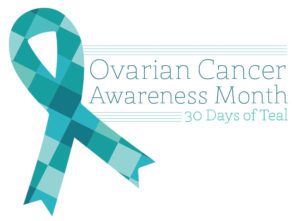
I’ve always known I have a pretty crappy family health history. My maternal grandmother beat breast cancer only to die from ovarian cancer when my mother was still in college. My own mother developed breast cancer shortly after I was born, recovered, and had her ovaries removed several years later to eliminate further risk. Finally, my aunt also passed away from ovarian cancer. It’s pretty obvious that the cards aren’t stacked in my favor.
BRCA-1 and BRCA-2
In the past decade, scientific researchers have come up with a few important ways to help women like me manage their cancer risk. Researchers discovered the BRCA-1 and BRCA-2 genetic mutations, which increase the risk for both breast and ovarian cancers. According to the National Cancer Institute, 55-65 percent of women with BRCA-1 will develop breast cancer by age 70, as will 45 percent of women with BRCA-2. Additionally, 39 percent of women with BRCA-1 will develop ovarian cancer by age 70, along with 11-17 percent of those with BRCA-2.
Managing the risk
I found out in 2008 that I have the BRCA-1 mutation. While my risk of breast cancer risk is higher, ovarian cancer is more difficult to diagnose and is thus much scarier. I’m checked every six months, alternating between a mammogram and a breast MRI. I feel confident that if a lump was present, they would find it. In fact, I had one mammogram while I was nursing my first daughter, and the machine was covered in breastmilk by the time I was finished!
I don’t have the same confidence when it comes to ovarian cancer. Tumors in the ovaries are almost impossible to feel, and the screening tests are not yet very good. Every year I have a transvaginal ultrasound, where the tech looks at my ovaries and uterus from the inside. If it sounds unpleasant, it is. There is also a blood test called CA-125, in which high levels of this particular protein in the blood may indicate ovarian cancer. But it may also indicate several other things. Researchers are working on better testing methods, but they aren’t there yet.
My best option for managing ovarian cancer risk is to have my ovaries removed. On the one hand, it’s not that big a deal. No one will notice that I don’t have them anymore. I’ll stop getting my period, but that has its benefits. On the other hand, I’m losing a part of me. A part that has led to three pregnancies and two children. The part that, if gone, means the option for a third child is off the table. It’s not an easy surgery, and there is a recovery period. But despite all the drawbacks, if losing my ovaries means my daughters won’t lose their mother to ovarian cancer, I’m all in.
Ovarian cancer awareness month
September is ovarian cancer awareness month, so I wanted to share my story with you, along with some of the facts. There are a few things you can do to manage your own risk:
- Know your family history. Find out if any of your relatives have had breast or ovarian cancers, and share that information with your doctors.
- Get screened for BRCA-1 and BRCA-2 if you do find a history of female cancers. There are tests that check for all possible mutations of both genes, as well as tests that look for specific mutations that have been found in a family member.
- If you have one of the mutations, talk to your doctor about a plan to manage your risk.
If you don’t have an increased risk for female cancers, there are still things you can do. Spread the word. Raise money if you are so inclined. You might find that a friend or relative has been diagnosed. Support those others who may be dealing with feelings relating to these cancers. Help and hope. We’re all in this together.














